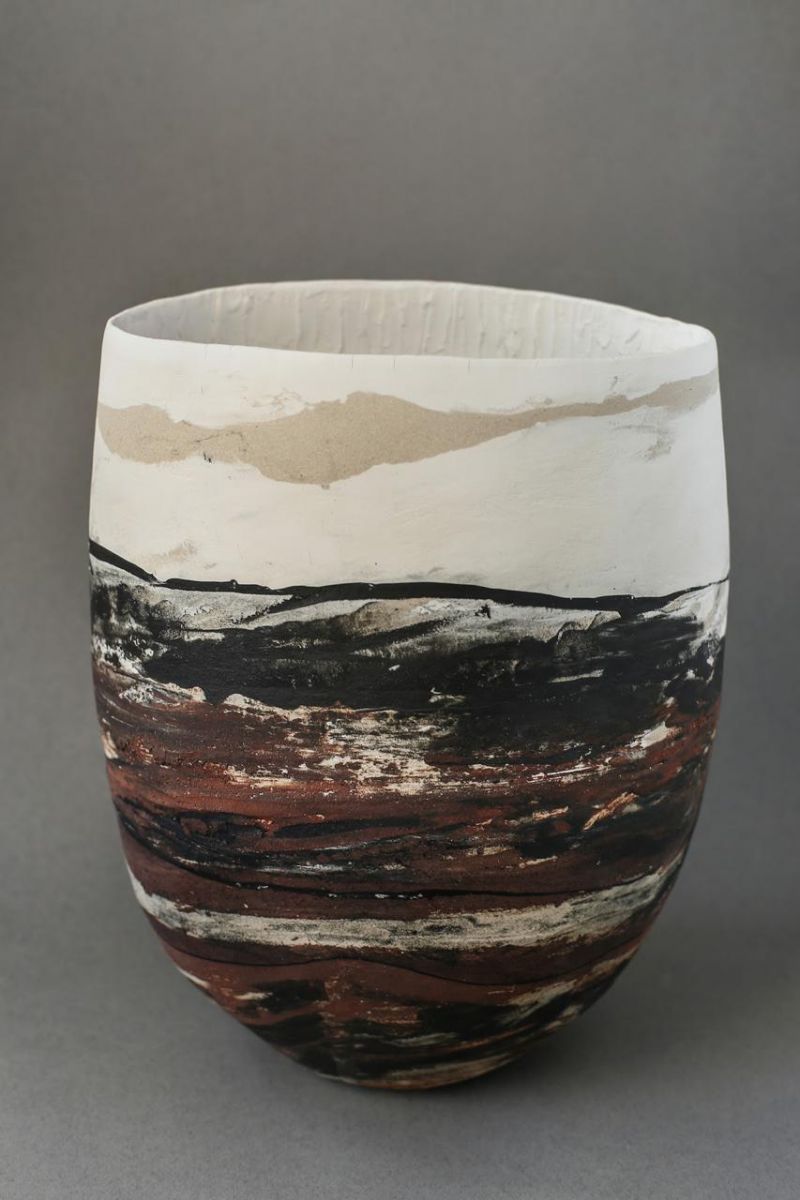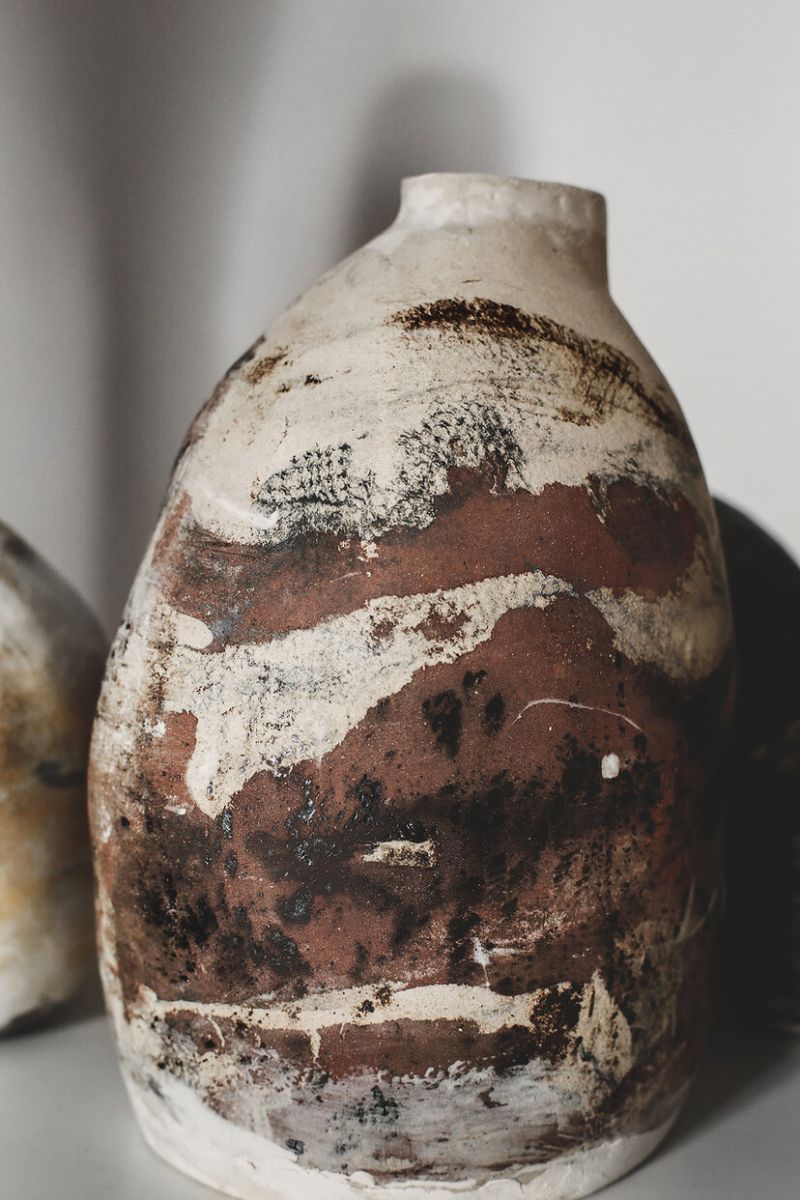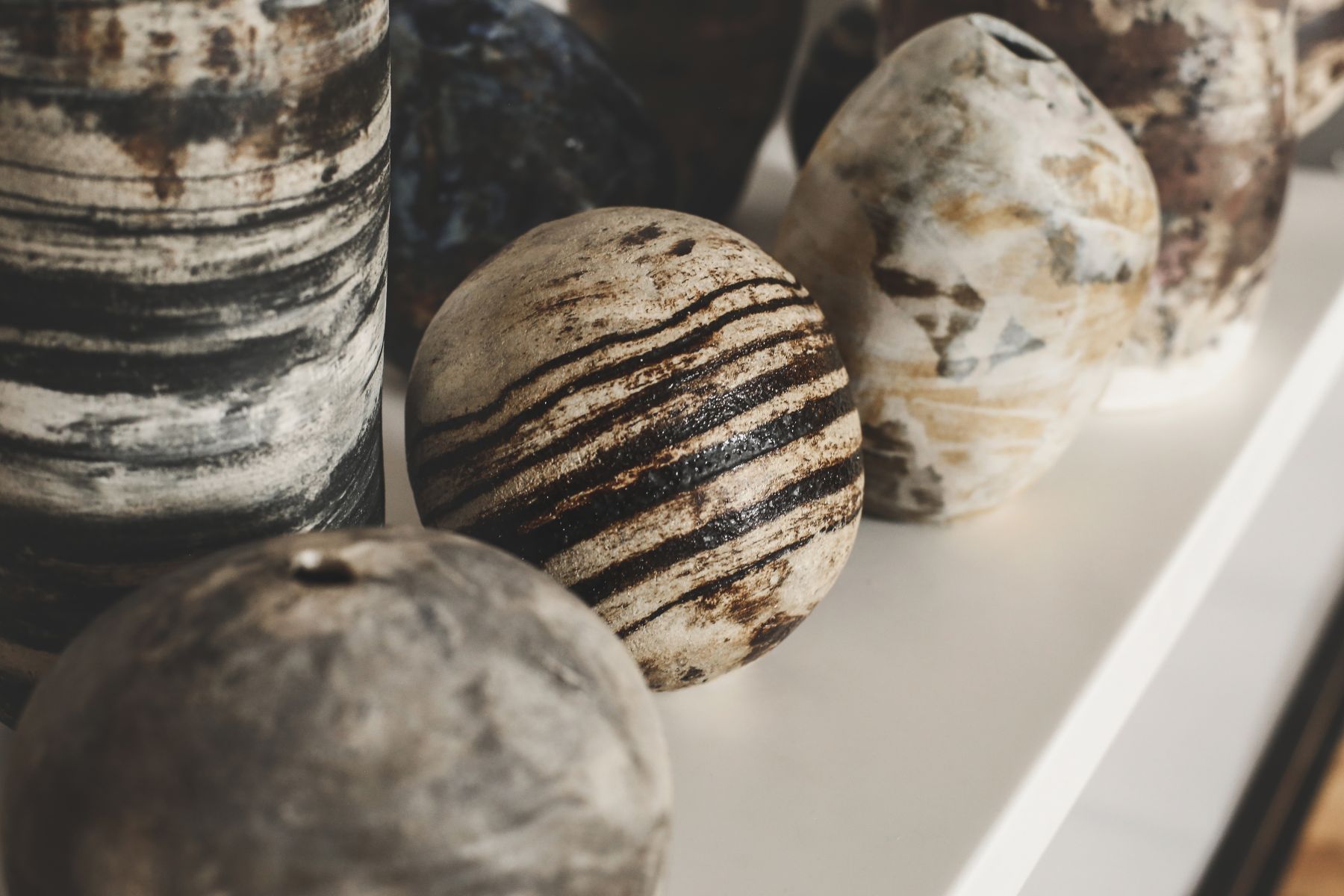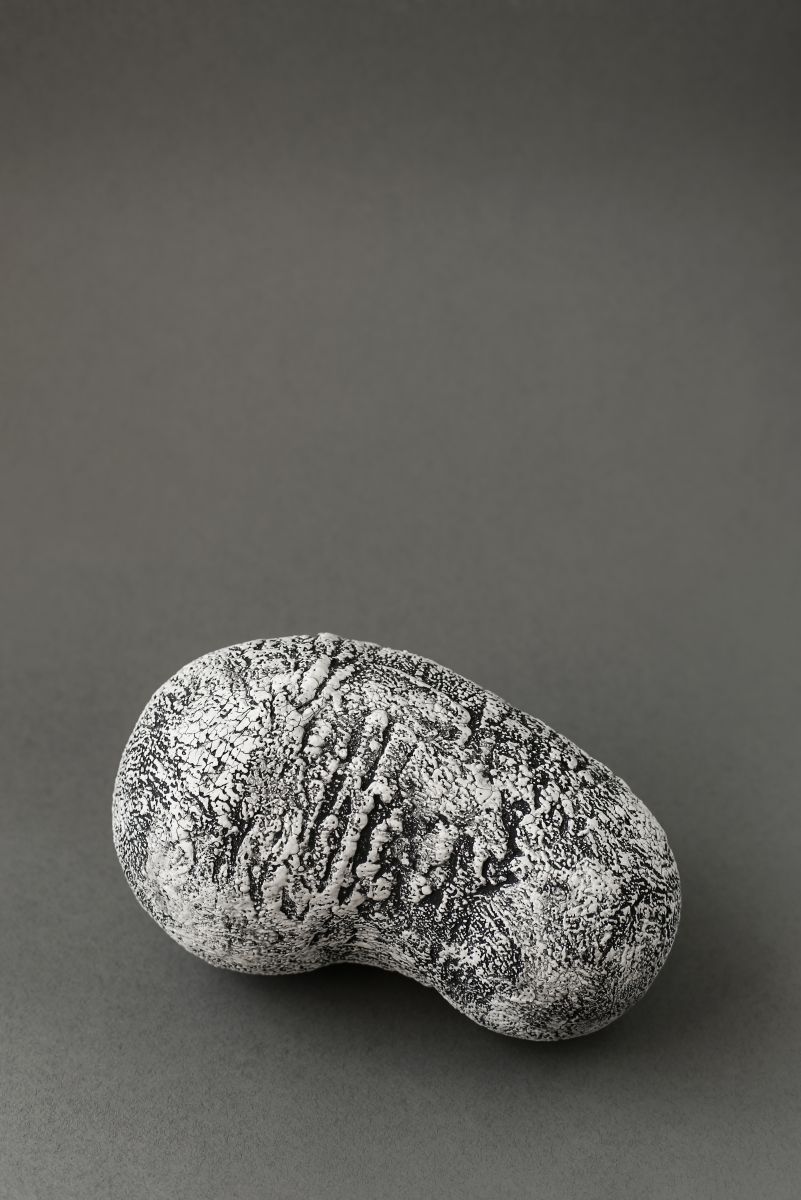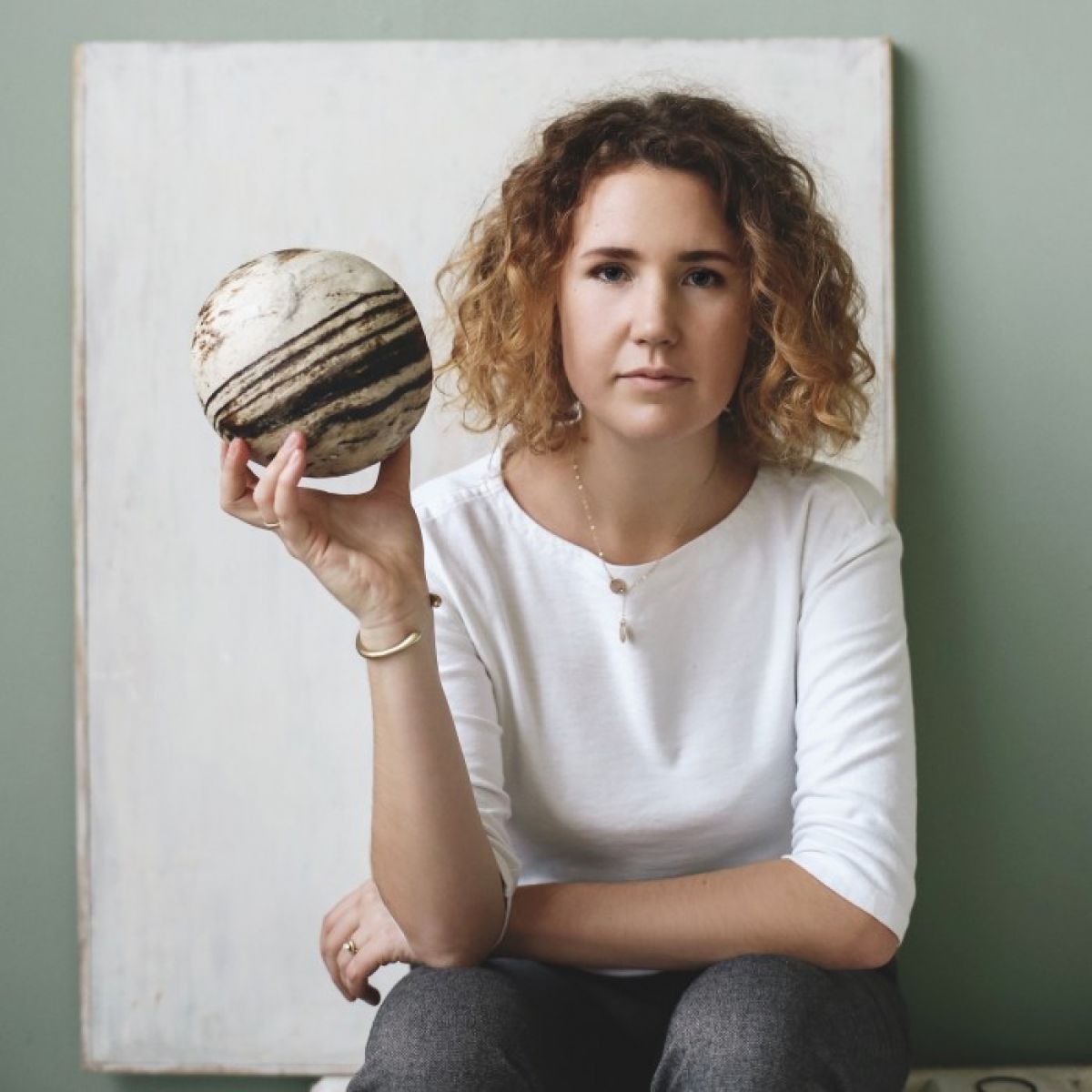
 +
+
October 2nd, 2020
Interview of Alena Muhina, ceramic artist, on the connection between ceramics and architecture, an inspiring journey to Norway and the formation of her own style.
Q. Has your architectural degree influenced your work in ceramics?
A. The Moscow Architecture University gives a great fundamental education in architecture and similar majors. I am grateful to the university’s community and people that work there. It is not a big place so everyone knows each other. I care for these relationships and value them as much as my professional skills acquired during the studies: understanding of space, the ability to draw, reading and calculating formulas, and many other things. All of these became my foundation; I cannot imagine myself in ceramics without it.
Q. Do you think modern architecture could serve as an inspiration for new forms in ceramics?
A. One could write a book answering this question…Moreover, ceramics itself could serve as a smaller architectural form ;) when talking about a form we always turn back to some catalogue of forms. In that sense what architecture has to offer is fully used in ceramics.
I enjoy noticing references. It is great when an artist leads the intellectual dialogue with his viewer through references. We have to admit that interpretation or even direct reference to architectural forms is a common approach in ceramics. There are similar styles in ceramics and architecture: modernism and constructivism, minimalism and kitsch. The main feature of the modern architecture is a trend for uniqueness: variety as a trend. Same changes are happening in ceramics as well. Architecture forms and nurtures taste, it even helps with spiritual development, it is hard to overestimate its influence on a human being. In its turn ceramics reflects on society's ideas through geometrical forms. As such ceramics is directly connected with architecture.Q. Tell us how have you decided to become a ceramic artist? Do you remember your first object you made with your own hands?
A. The first object I made as a grown up is standing on my mother's bedside table. I remember it, of course. A little cup that I imagined to be a vase before it dried out (clay shrinks during firing and drying) It is white from the outside and terracotta from the inside.
I joined an ordinary ceramic school two years after my graduation from the university. The main criteria in choosing the school was location, it needed to be close to home. It was the time when I was enjoying the process without making any plans about the future, simply getting into it for the sake of creation. After some time my teacher asked me to help her with her client, to come up with a design for a new order. Once my proposal was confirmed she asked for a further assistance. My attitude to ceramics had changed from that moment; I became more focused, studied techniques, asked questions and took lessons from the masters. I also worked in architecture at the same time. When Archpole approached me with the inquiry about the whole collection of black ceramics I started to think about renting my own studio. I am really thankful to the guys who organised The Club of Industrial Designers, I was extremely happy to become a part of it. It all started then and continued with more studies, international exhibitions, art residences, trips to masters and opening up the world of ceramics for me.Q. What is more important – texture or a form? How did you come to working with different types of clay, do you have your favourite among them?
A. Texture inspires me a lot, it is very tactile. My idea to work with different types of clay comes from the special connection I feel towards texture. Every type of clay has its own special properties; they differ during the process of making and firing. Real work with shape starts after I feel exhausted with working on texture. That is the moment for forming the shape. I finish it in some sort of meditative state, distancing myself from it, making it perfect. Texture, in its turn, will show itself without any tricks at the later stages. Both texture and shape are important for me even though I have a different attitude towards them in the process of making.
Q. Your works, especially monochrome colours and simplicity of shapes, remind us of nature. Some of your pieces send us back to the extra-terrestrial landscapes of Iceland and Kamchatka, is there any connection between your travelling and your art?
A. Spot on ;) I could never think of myself as someone inspired by nature. At the same time nature suddenly comes through in my finished objects after I complete the pieces. My close friends were the first to notice it, since then my attention has been drawn to this unintentional result of my work rather than a planned process. I cannot stop seeing landscapes in a mixture of clay.
I would like to tell you about one revelation that happened to me in Norway few years ago. I managed to renew my visual references completely and even my understanding of nature transformed after that trip. We went on a walking tour on a vast plateau in Norway. Note please, it was a huge plateau, not the beautiful fjords everyone thinks about when Norway comes to mind. We started our two weeks tour on a plateau with no greenery, absolutely none, even horizon was a huge grey empty plateau. There was no moss or grass. By the end of the day one I was ready to come back. But with every new day nature was coming through this grey background, grew bigger and more colourful, saturated through me slowly but very intensely. I felt I paid to see this hidden beauty with my physical efforts during the tour. By the end of the trip, after passing through lakes and rivers and snow caves we reached those “extra-terrestrial” landscapes, the contrast with what we had seen before was huge. This was the moment something shifted in me. I should add that it was my first serious walking tour in my life; they say such experiences influence people too. My next trip was Altay and the following one will be Kamchatka this year. And yes, I can say, I see those landscapes in my works.Q. How do you get inspired? Which leading ceramic artists do you like?
A. First of all, Rafa Perez. I love his attitude to clay and to the creation process, I like that he does not put it on top of everything. It feels as if it is just the way of life for him, the part of his personal foundation.
Also, I would like to note Takashi Murakami, he is a genius of textures. Patricia Varea is a master of working with china. I cannot get enough of looking at her works. Designers The Haas Brothers are also very successful in their cool experiments with clay.Q. In the beginning of your career you used to do ceramics that was more functional, now you are into ceramic sculpture. Have you step away from the practical purpose, as abstraction is more suitable for self-expression?
A. Functional ceramics presume a very strict quality control and too many rules to follow. It is similar to school, but not everybody feels comfortable in school. At the same time I feel those rules are embedded in me. Almost all my pieces can be used for a specific purpose. If someone would have an idea to eat a salad from my bowls or put flowers in my vases they would play their practical role just fine. I think it is great to have such flexibility towards different usage.
Q. What advice would you give to the beginner artists in ceramics?
А. Do whatever you wish, do not afraid to experiment. However, this advice is too common, I feel it is not my place to give advice just yet, I am still a beginner myself.

